Abstract
This research article explores the intriguing connection between the ancient Vedic mathematical wisdom embedded in Vedic texts and the calculation of the mathematical constant Pi. The Shatapatha Brahmana and Vedic verses from Rigveda provide approximations of Pi, showcasing the advanced mathematical understanding of Vedic scholars during the Vedic period. The study delves into the use of Vedic numerical codes and the application of the Katapayadi encryption system, revealing how ancient sages encoded mathematical information in hymns.
1. Introduction
The mathematical constant Pi, denoted by the symbol (π), has captivated the interest of mathematicians and scholars for thousands of years. However, the ancient Vedic texts offer an exceptional and fascinating perspective on the exploration of Pi. While Pi’s importance in contemporary mathematics is widely recognized, this article delves into the historical insights provided by ancient Vedic scriptures, specifically the Shatapatha Brahmana and Rigveda. These texts, dating back to ancient times, provide evidence of the remarkable mathematical proficiency of Vedic scholars, who were able to approximate Pi using intricate astronomical calculations.
Traditionally, the precision associated with Pi has often been attributed to modern computational methods. However, by examining the mathematical sophistication apparent in Vedic texts, we challenge the conventional belief that such accuracy was only possible with the aid of computers. Through a thorough analysis of the Shatapatha Brahmana and Rigveda, we aim to uncover the ancient techniques and knowledge systems that enabled Vedic mathematicians to grasp the concept of Pi and its numerical value.
By focusing on the Vedic approach to Pi approximation, we illuminate a lesser-known aspect of mathematical history and emphasize the interconnectivity of ancient Vedic wisdom with modern mathematical concepts. This exploration not only enriches our understanding of the historical evolution of mathematical knowledge but also invites a reassessment of the contributions made by Vedic civilizations to the field of mathematics. Through this study, we seek to bridge the gap between past and present mathematical thought, encouraging a deeper appreciation for the enduring legacy of Vedic mathematics.
1.1. Vedic Numerical Codes
In the ancient Vedic texts, a sophisticated numerical coding system was employed by sages to represent numbers. This section delves into the intricacies of the Vedic numerical codes, showcasing their complexity and sophistication.
The Sanskrit language, utilized extensively in Vedic scriptures, assigned specific numerical values to each consonant. For instance, consonants like ka, ta, pa, and ya represented the numerical value 1, while kha, tha, pha, and ra represented 2, and so forth. This intricate system allowed for the representation of numbers through consonants, offering a unique approach to numerical expression.
The Vedic sages meticulously crafted this numerical coding system, enabling the encapsulation of mathematical concepts within Vedic verses. Through this system, numerical values were seamlessly integrated into the fabric of Vedic literature, underscoring the deep interconnection between mathematics and spirituality in the ancient era.
1.2. The Vedic Verse Revealing Pi:
Upon analysis of a Vedic verse from the Rigveda, which was originally thought to be a hymn dedicated to Lord Shiva or Lord Indra, a third, unexpected meaning has been discovered. Through meticulous technical translation and scrutiny, this verse has been found to contain a highly accurate approximation of Pi. This mathematical constant represents the ratio of a circle’s circumference to its diameter, up to an astonishing 32 decimal places. This discovery sheds new light on the ancient knowledge and mathematical prowess of the Vedic civilization.
गोपीभाग्यमधुव्रातः श्रुगशोदधिसंधिगःΙ
खलजीवितखाताव गलहाला रसंधरःΙΙ
The verse mentioned above holds three distinct meanings, namely, the glorification of Lord Shiva, the adoration of Lord Indra, and the expression of the value of Pi up to thirty decimal places
ga-3,pa-1,bha-4,ya-1,ma-5,dhu-9,ra-2,tha-6,shru-5,ga-3,sho-5,dha-8,dhi-9,sa-7,dha-9,ga-3,kha-2,la-3,jee-8,vi-4,tha-6,kha-2,tha-6,va-4,ga-3,la-3,ha-8,la-3,ra-2,sa-7,dha-9,ra-2
Thus the value of Pi from the Vedic verse is 3.141592653589793238462643832792….
The ancient Vedic sages had a unique approach to memorizing important concepts – they compiled the information into Vedic verses. However, these verses weren’t meant to spoon-feed the reader. Instead, they were designed to encourage deep analysis and contemplation of the meaning behind them. Interestingly, the sages also used numerical codes within the verses to further enhance the memorization process. These Vedic numerical codes are still studied and analyzed by scholars to this day.
ka:क -1,kha:ख -2,ga:ग -3,gha:घ -4,gna:ङ -5,ca:च -6,cha:छ -7,ja:ज -8,jha:झ -9
ta:ट -1,tha:थ -2,da:ड -3,dha:ढ -4, ṇa :ण -5,ta:त -6,tha:थ -7,da:द -8,dha:ध -9
pa:प -1,pha:फ -2,ba:ब -3,bha:भ -4,ma:म -5
ya:य -1,ra:र -2,la:ल -3,va:व -4,sa:श -5,sha:ष -6,sa:स -7,ha:ह -8,kshah:क्ष -0
Thus the Sanskrit constants denote
- ka,ta,pa,ya denote 1
- kha,tha,pha,ra denote 2
- ga,da,ba,la denote 3
- gha,dha,bha,va denote 4
- gna,na,ma,sa denote 5
- ca,ta,sha denote 6
- cha,tha,sa denote 7
- ja,da,ha denote 8
- jha and dha denote 9
- kshah denote 0
The Vedic verse mentioned here is a remarkable example of the mathematical prowess of the ancient Vedic scholars. This verse is encoded with numerical values using the Vedic numerical codes, which offers us a fascinating insight into the mathematical acumen of these scholars. By assigning numerical values to the Sanskrit consonants in the verse, the encoded representation of Pi emerges, providing us with a precise numerical approximation that aligns with modern computational calculations.
The decryption process of the Vedic verse is detailed meticulously, showcasing the application of the Vedic numerical codes to derive the value of Pi. Through this analysis, the article highlights the remarkable accuracy and sophistication of Vedic mathematical techniques, which challenge conventional notions of mathematical history and underscores the timeless wisdom encapsulated within Vedic scriptures.
Moreover, we can observe the multifaceted nature of Vedic verses, which often possess multiple layers of meaning beyond their apparent interpretation. By uncovering the mathematical significance embedded within Vedic hymns, the research sheds light on the profound intersections between mathematics, spirituality, and literature in ancient Indian culture.
The article elucidates the process of decoding the Vedic verse and extracting the value of Pi through detailed calculations and illustrations. This visual representation provides us with a better understanding of the intricate mathematical concepts inherent in Vedic scriptures, fostering a deeper appreciation for the rich heritage of Vedic mathematics and its enduring relevance in contemporary discourse.
2. A Comparative Historical Analysis
When we compare the different historical attempts to calculate Pi in both the Western and Vedic traditions, a clear distinction emerges that highlights the sophistication and accuracy of Vedic approximations. In contrast, Western mathematicians faced significant challenges when trying to accurately calculate Pi beyond a certain number of digits, particularly before the advent of computers.
For example, consider the historical methods used by Western mathematicians, such as Archimedes’ approach in ancient Greece. Archimedes’ method involved inscribing and circumscribing polygons inside a circle to approximate its circumference and diameter, thus obtaining a range of values for Pi. However, despite its ingenuity, this method was inherently limited by the complexity of the geometric constructions involved and could only provide rough estimates of Pi.
On the other hand, Vedic mathematicians developed highly sophisticated and accurate approximations for Pi, based on their deep understanding of geometrical principles and their advanced computational techniques. These approximations were remarkably precise, even when compared to modern-day calculations, and demonstrated the remarkable mathematical prowess of the Vedic tradition.
The Vedic mathematicians were known for their impressive accuracy in calculating the value of Pi. Vedic scriptures such as the Shatapatha Brahmana and RigVeda provide precise numerical values for Pi, achieved through intricate mathematical encoding and sophisticated astronomical calculations.
An example of this is as we reconnoitered before, the Vedic verse from Rigveda, which is traditionally interpreted as a hymn praising Lord Shiva or Lord Indra. Through a technical translation and decryption process utilizing the Vedic numerical codes, the verse reveals an astonishing approximation of Pi up to 32 decimal places. This level of accuracy was far beyond what Western mathematicians could achieve before the computer era.
The Vedic numerical codes provide a systematic and comprehensive framework for representing numerical values within Vedic scriptures, indicating a deep understanding of mathematical principles and their application. This is in contrast to the fragmented and often ad hoc approaches employed by Western mathematicians in their historical attempts to calculate Pi.
Therefore, the advanced mathematical knowledge encoded within Vedic texts challenges conventional narratives of mathematical history, underscoring the sophistication of Vedic Hindu mathematical traditions and their contribution to the field of mathematics.
Through illustrations depicting the Vedic numerical codes and comparative analyses of historical methods, nuanced differences between Western and Vedic approaches to Pi calculation. This comparative historical analysis sheds light on the enduring relevance of Vedic mathematics and its contributions to the broader tapestry of human mathematical understanding.
In his groundbreaking work Aryabhatiyam, dated to 499 CE, Aryabhata presents a remarkable approximation for the value of pi, demonstrating an impressive level of mathematical insight far ahead of his time. The verse ” caturadhikam śatamaṣṭaguṇam dvāṣasṭistathā sahasrāṇām ayutadvaya viśkambhasya āsanno vr̥ttaparīṇāha: || ” provides a formula to calculate the circumference of a circle based on its diameter.
Translated, it reads: “Add 4 to 100, multiply by 8, and add to 62,000. This is approximately the circumference of a circle whose diameter is 20,000.” In other words, Aryabhata’s approximation formula yields a value for pi that is accurate to four decimal places.
Aryabhata, an ancient Indian mathematician, is renowned for his groundbreaking work on the value of pi. What makes his insight even more remarkable is his use of the term “Asanna,” which means approximate. This indicates that he was aware of the limitations of his calculated value, recognizing that it is only an estimation and, importantly, that it is incommensurable or irrational. Aryabhata’s understanding of the nature of pi was so sophisticated that he realized its irrationality centuries before it was formally proven in Europe by mathematician Lambert in 1761.
Aryabhata’s pioneering work went beyond providing a practical method for approximating the value of pi. He also demonstrated a profound understanding of its mathematical properties. His use of the term “Asana” underscores the depth of his mathematical insights, cementing his legacy as one of the most influential mathematicians of ancient times.
2.1. Ancient Uses of Pi
Pi (π) is an incredibly captivating and influential number in the world of mathematics, with its roots deeply embedded in the study of circles. It has been recognized since ancient times that the ratio between a circle’s perimeter (or circumference) and its diameter remains constant across all circles. This fundamental constant is represented by the equation perimeter/diameter = constant, or p/d = π.
In the rich tapestry of Vedic Civilization and traditions, the value of pi has been seamlessly integrated into various aspects of life since antiquity. A shloka, or hymn, attributed to revered deities like Lord Krishna or Shiva, provides the value of pi up to an incredible 32 decimal places. Our ancestors utilized encryption techniques to preserve and transmit such precise numerical values, demonstrating their ingenuity and intellectual prowess.
The significance of pi extends beyond mere mathematical curiosity, as it underpins numerous calculations and formulas across a multitude of disciplines, from geometry and trigonometry to complex analysis and number theory. Additionally, practical applications of pi can be observed in ancient texts such as the Shulba Sutras and Vishnu Dharmottar Purana, where it plays a vital role in the construction of altars, sacrificial arenas, temples, arches, domes, ponds, and more.
Defined as the ratio of a circle’s circumference to its diameter, pi is an irrational number, meaning its decimal representation goes on infinitely without repeating. Aryabhata, a venerable Vedic mathematician, provided an approximate value of pi in his seminal work Aryabhatiyam, demonstrating an acute awareness of its importance in mathematical calculations and practical applications.
In essence, the ancient uses of pi serve as a testament to the profound insights and advanced mathematical understanding of early civilizations. From the meticulous mensuration of circles to the sophisticated encryption of numerical values in sacred verses, the historical significance of pi resonates through the annals of human intellectual pursuits, highlighting its enduring importance across cultures and epochs.
2.2. The Katapayadi Encryption System
The Katapayadi encryption system is a remarkable example of the intersection between mathematical knowledge and spiritual traditions in the Vedic period. This encryption system encodes numerical information into sacred verses, using syllables or sounds to represent numerical values, and provides a means to preserve and transmit mathematical knowledge within the context of sacred texts. The system even includes the value of pi up to 31 decimal places, which is concealed within the verse dedicated to Lord Krishna or Shiva, accessible only to those familiar with the encryption scheme.
This integration of mathematics with spirituality highlights the interconnectedness of different facets of knowledge in ancient Hindu society. It reflects a holistic worldview where scientific understanding and cultural beliefs were not seen as separate domains but rather as complementary aspects of a broader intellectual tradition. The existence of such encryption systems highlights the ingenuity and advanced mathematical acumen of Vedic scholars. The ability to encode complex numerical information demonstrates a sophisticated understanding of both linguistic and mathematical principles, further emphasizing the depth of knowledge present in Vedic texts.
In essence, the Katapayadi encryption system exemplifies how science and spirituality coexisted and mutually enriched each other in the Vedic period. This legacy of integrated wisdom continues to inspire and fascinate scholars and enthusiasts alike, showcasing the profound integration of mathematical concepts into religious and cultural practices.
2.3. Pi in Contemporary Mathematics
The convergence of ancient Vedic wisdom with modern mathematical developments is a fascinating topic in contemporary mathematics. The Shatapatha Brahmana and RigVeda are two examples of influential Vedic texts that contain unique perspectives on pi and its mathematical significance. The ancient Vedic civilization’s use of encryption systems such as Katapayadi to encode numerical information, including the value of pi, is a testament to their deep understanding of mathematics.
Throughout history, pi has been a central focus of study and fascination for mathematicians. The ancient mathematicians’ foundational principles, including those from Vedic traditions, are still fundamental to our understanding of pi and its significance in modern mathematics. With the advancement of computing technology, mathematicians have been able to calculate pi to trillions of digits, breaking previous records for precision. Despite this, the principles established by ancient mathematicians remain an integral part of our understanding of pi and its importance in contemporary mathematics.
3. Conclusion
The research presented in this article highlights the importance of recognizing the mathematical achievements of ancient Vedic civilization. Through a detailed examination of Vedic texts, it becomes clear that this civilization had a deep understanding of pi and its significance in the field of mathematics. This discovery challenges conventional notions of mathematical history and opens the door for further exploration.
In addition to uncovering the role of pi in Vedic scriptures, this research also sheds light on the use of encryption systems such as Katapayadi to encode numerical information, including pi. This highlights the depth of mathematical knowledge present in Vedic traditions and the innovative approaches used to preserve and transmit this knowledge.
Moreover, this article advocates for a holistic approach to understanding the evolution of mathematical knowledge across different cultures and periods. By recognizing the contributions of ancient civilizations like the Vedic society, we gain a deeper appreciation for the interconnectedness of human intellectual pursuits and the enduring quest for knowledge.
The study of pi in Vedic texts serves as a compelling example of how ancient wisdom continues to enrich and inspire contemporary mathematical inquiry. By embracing a broader perspective on mathematical history, we can glean valuable insights and foster a deeper understanding of the intricate tapestry of human knowledge and discovery. Overall, this research underscores the need to recognize and appreciate the contributions of diverse cultures to the field of mathematics.
References
- Shulba sutra
- The Crest of the Peacock: Non-European Roots of Mathematics by George Gheverghese Joseph.
- A History of Mathematics: An Introduction by Victor J. Katz.
- Mathematics in India by Kim Plofker.
- Aryabhata’s Mathematics by Kripa Shankar Shukla.
- Vedic Mathematics by Jagadguru Swami Sri Bharati Krishna Tirthaji Maharaja.
- Brahmacari, Srivas Krishna Das. Understanding the Space-Time Continuum-As revealed in Vedic literature: A Comprehensive study on the Theory of Relativity-As revealed in Vedic literature. JF Inc.
- Articles collection of Brahmacari, Srivas Krishna Das. from www.originofscience.com
Published on:
International Journal of Science and Research Archive, 2024, 11(02), 543–548.Article DOI: 10.30574/ijsra.2024.11.2.0464Fell text Pdf. : https://ijsra.net/sites/default/files/IJSRA-2024-0464.pdf
Views: 182
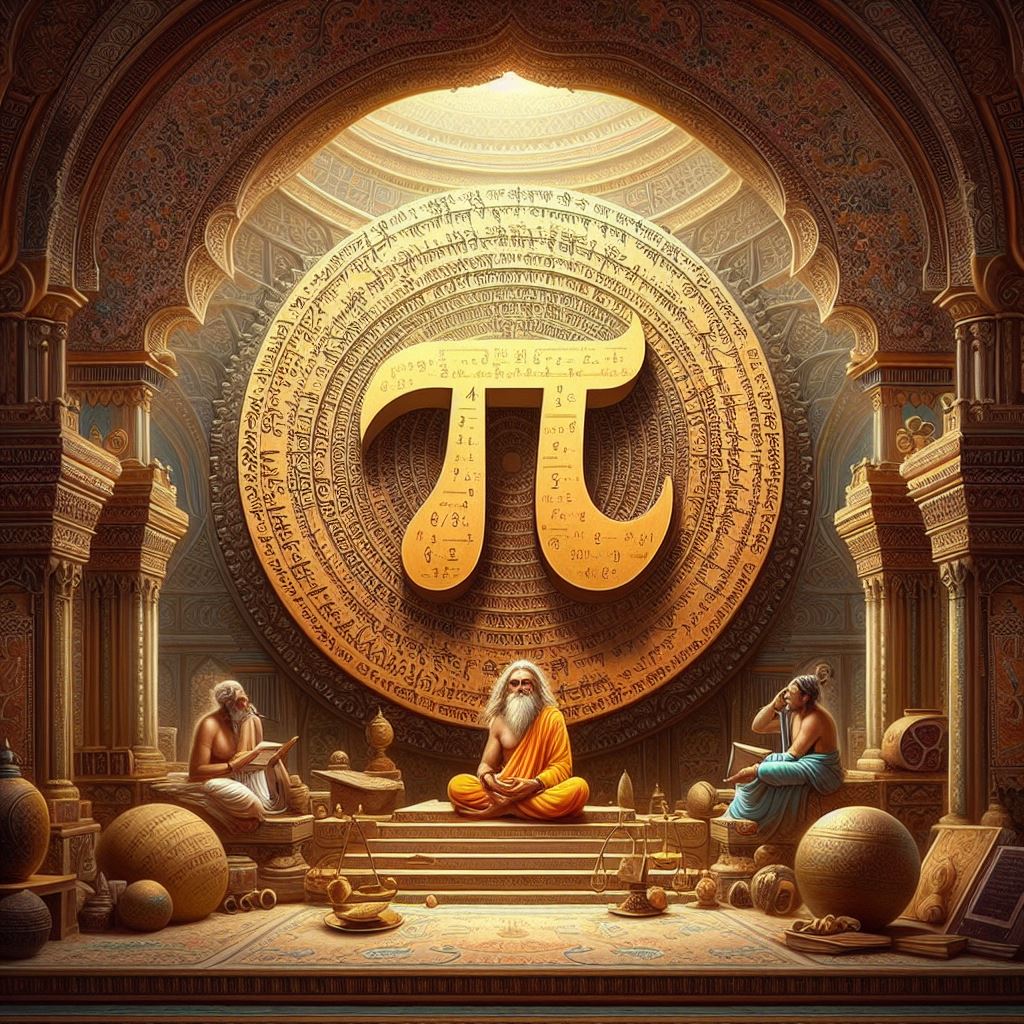
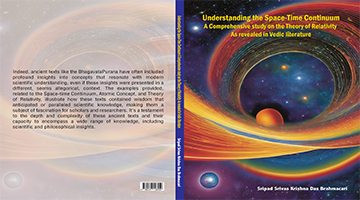

















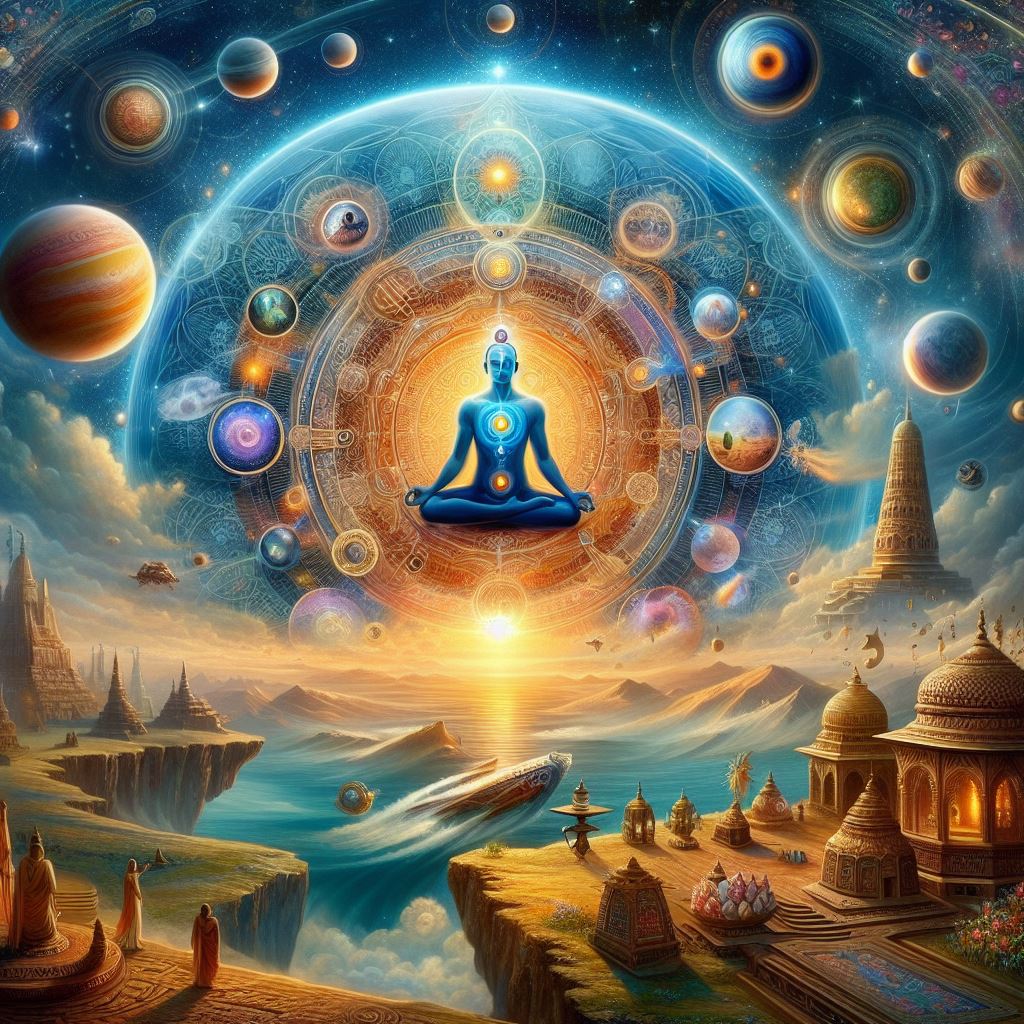




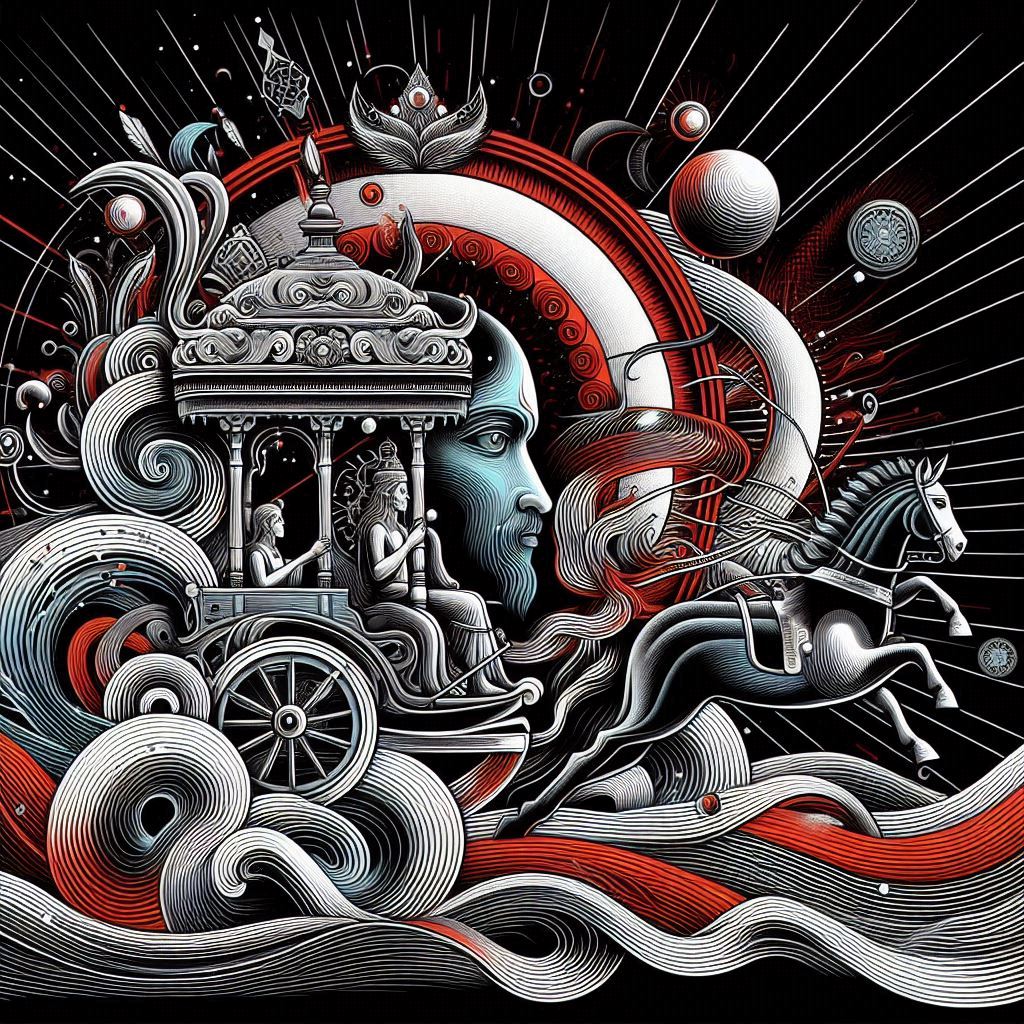


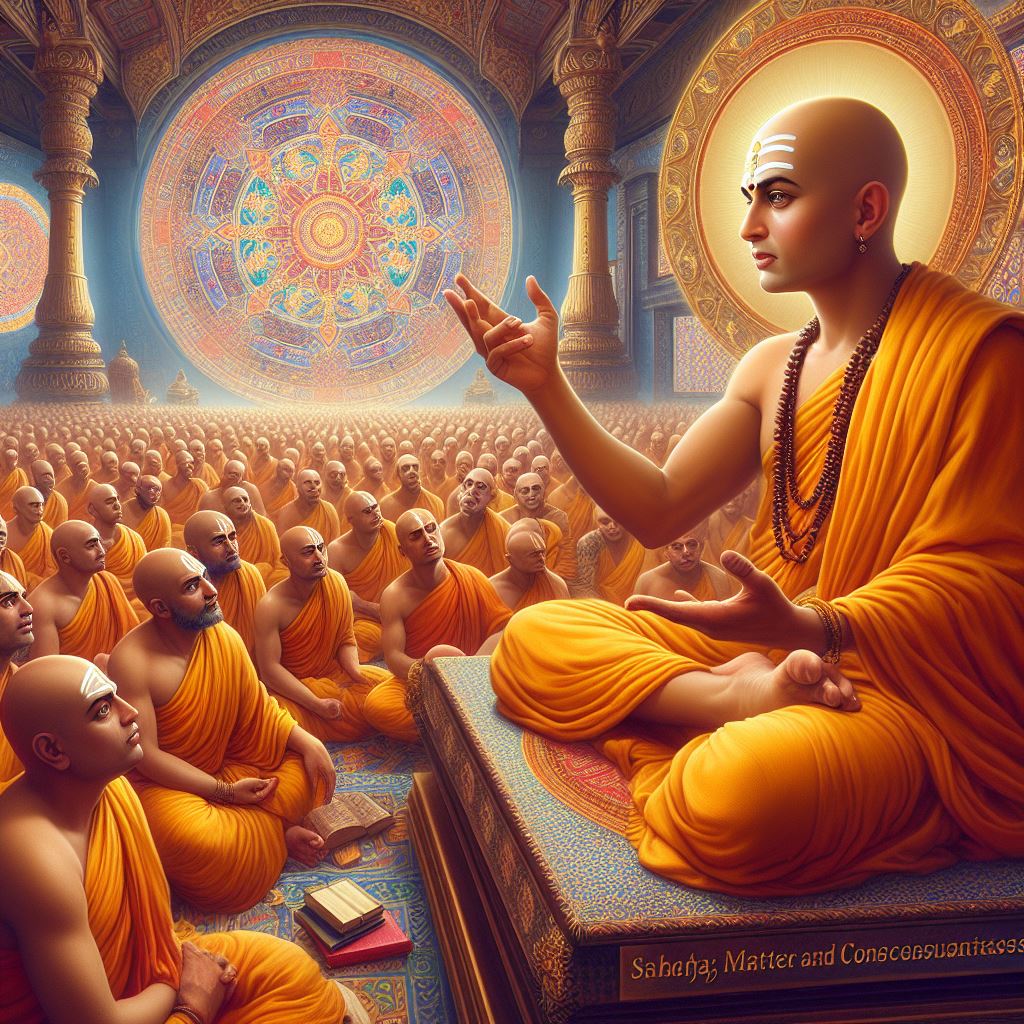



Origin of Science
The Psychospiritual Roots of Crime
Unveiling 54 Vedic Scientists
The Existence of the Soul: Exploring Neuroscience, Quantum Physics and Vedic Philosophy
Temporal Relativity in Vedic Literature: An Interdisciplinary Analysis of Time Dilation Narratives
Acharya Kaṇāda: The Ancient Sage Who Discovered the Atom
Evidence of Vedic Sanātana Hinduism as a Global Dharma
Perception of Quantum Gravity and Field Theory in the Vedas
String Theory as Mentioned in Veda
Sanskrit’s Role in Advancing AI: A Comprehensive Study
The Vedic Model of the Mind: A Contemporary Exploration
Vedic Contributions to Geometry: Unveiling the Origins of Mathematics
Matter and Consciousness in Achintya Bhedābheda: Bridging with Quantum Physics